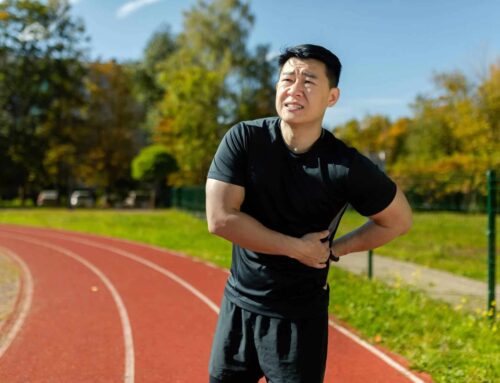I’ve prided myself on providing an innovative treatment approach that is “on the cutting edge” to help our patients avoid the cutting edge of a cold, sharp, scalpel. I’m excited to share some news about something that I’ve been looking forward to for years.
You may already know my own struggles in our medical system when I was exposed to black mold. The long story short is that my general diagnosis was “you have arthritis, and you’re going to have to live with it.” As much as a diet of Advil and Celebrex appealed to my organs, I knew I had to find another way. I tried everything under the sun including several alternative medicines to find the answer. After one year of hardly being able to function, the answer revealed itself when the leak in the wall next to my room became big enough to cause flooding in the house (after years of providing the optimal environment for mold to flourish). None of the doctors ever cared to follow up and check in, and likely carried on thinking they were right.
This is why it astonishes me to think that people are dealing with much better understood issues like back or hip pain, but the answer they get is “you’re not bad enough for surgery yet.” It’s as if doctors are telling them, “give up now, this is just what happens as you get older.” People find themselves coping with having to stop doing the things they love, the things that make them uniquely them. For me it was weightlifting. I had spent over 10 years at that point lifting weights and eating right, only to watch nearly every bit of muscle waste away in that one year. I know how painful it is to be a 24-year-old man and have to ask his roommates to open jars for him because his grip strength is less than 5 pounds (instead of the typical 65-100lbs).
Many people delay coming to us because they’ve already tried physical therapy and it “didn’t work.” In one aspect they’re correct, physical therapy in and of itself is not the answer. You put 1,000 physical therapists in a room and the treatment approaches will vary across the board. When I was first practicing, it was difficult to see a patient who wasn’t getting better come to me from someone else’s schedule and quickly start making progress. It became clear that it’s not the tool, it’s the carpenter’s know-how that makes the difference. When I started building this clinic I started searching for a way to build an approach that was both teachable and repeatable so that the carpenters were building the same things.
Rather than looking at one or two research studies and treating them as gospel (which many practitioners do), I needed to combine research from several different disciplines: physiology, biology, anatomy, physics, neuroscience, to name a few. One thing I kept coming back to was a PhD candidate I worked closely with when I was at USC. Her name is Dr. Jo Armour Smith and to date she’s helped author over 30 published research articles and lead the research for 15 of them. She’s studied and researched alongside some of the top minds in neuroscience and biomechanics.
When I first met her, she was preparing her dissertation on back pain, and a little muscle called the “multifidus,” a muscle that is underactive in over 85% of people with chronic back pain, and as my own practice would suggest, is commonly underactive in individuals with a variety of bodily pain including shoulders, hips, knees, and neck. It often becomes underactive because, over time, the brain stops using it. In these individuals, fMRI imaging of the brain shows that the part of the brain responsible for activating the multifidus doesn’t light up when it should.
So while most “back pain specialists” focus on fixing the back, the actual issue is in the brain. You have to fix the brain to fix the back, and that’s how we treat back pain at DPT. We focus on correcting how your brain and body are working together to cause movement. This is what we mean when we talk about treating the root cause.
Here’s the exciting news: Dr. Jo Armour Smith, one of the nation’s top researchers in back pain, biomechanics, and neuroscience, has graciously agreed to join me on the DPT podcast, UnCut. We’ll be doing a two-part interview. In the second, she interviews me about our approach and how we apply the research that she’s doing. In time, my hope is that we can launch a study to prove that we’re changing the brain. Currently, all we know is that that’s what we’re trying to do , and people are getting better. A lot better for a longer period of time than they do anywhere else.
It’s only the beginning and I’m excited to see what innovations we can bring our patients in the years to come. Be sure to check out our podcast with Dr. Armour Smith!






